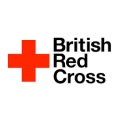Usually, a CV is required to give to an employer when applying for jobs. A good CV is essential, and important to progress to further stages of the application process, such as the interview. Spending time creating a good CV is valuable, as it is your first chance to demonstrate your skills and experience in the area you are applying for.
Key Sections to Include
- Contact Details
Key contact information to include:
- Name
- Phone Number
- Email Address
- LinkedIn [if applicable]
Do not include:
- Age
- Date of Birth
- Nationality
- Marital Status
- Education
This should be added early in the CV if you are fresh out of education or early in your career. If you have significant professional experience, this section should be lower down and is less important.
Educational information to include:
- Qualifications (with descriptions and dates)
- Schools and Universities attended (with dates)
If you are early in your career, you can include specific aspects of courses that may be most relevant to the work you are applying for (e.g., research projects, reports, group work).
- Work Experience
This is the most important part of the CV, highlighting why your experience suits the job you are applying for.
You should include:
- Employer
- Job
- Dates
- Description of the work done. Analyse the job application you are applying for and draw out key themes from your previous experience.
Optional Sections to Include
- Objective / Summary Statement
You may choose to include a summary statement highlighting your career goals and key skills. This is often updated for each individual job applied to.
- Skills and Achievements
Consider including a section dedicated to your skills including both technical and soft skills (leadership, communication etc…). Tailor this to the job you are applying for.
Highlight any notable achievements including awards, projects, or results.
- References
It is not necessary to include references in your CV, but you may want to mention that references are available upon request.
Formatting
- Font – font should be clear and professional. The font should be consistent throughout the document, and a size 11/12.
- Bullets – use headings for the sections and split into bullet points to clearly demonstrate the information.
- Concise – be concise to ensure the key points come across and the CV is easy to read.
- Read Over / Spell Check - read over your CV a few times before submitting to make sure there are no errors.



![Skills enterprise [logo]](https://refugeeemploymentnetwork.co.uk/wp-content/uploads/2020/06/sq-Skills-enterprise-logo-120x120.png)


![Chatterbox [logo]](https://refugeeemploymentnetwork.co.uk/wp-content/uploads/2020/06/sq-Chatterbox-logo-120x120.png)



![New Routes Integration [logo]](https://refugeeemploymentnetwork.co.uk/wp-content/uploads/2020/06/sq-New-Routes-Integration-logo-120x120.png)
![Aspire Oxfordshire [logo]](https://refugeeemploymentnetwork.co.uk/wp-content/uploads/2020/06/sq-Aspire-Oxfordshire-logo-120x120.png)
![clear citylife [logo]](https://refugeeemploymentnetwork.co.uk/wp-content/uploads/2020/06/sq-clear-citylife-logo-120x120.png)
![elatt Your Learning Community [logo]](https://refugeeemploymentnetwork.co.uk/wp-content/uploads/2020/06/sq-elatt-Your-Learning-Community-logo-120x120.png)
![Concept Training [logo]](https://refugeeemploymentnetwork.co.uk/wp-content/uploads/2020/06/sq-Concept-Training-logo-120x120.png)

![TERN [logo]](https://refugeeemploymentnetwork.co.uk/wp-content/uploads/2020/06/sq-TERN-logo-120x120.png)
![World Jewish Relief [logo]](https://refugeeemploymentnetwork.co.uk/wp-content/uploads/2020/06/sq-World-Jewish-Relief-logo-120x120.png)




![Ashford Borough Council [logo]](https://refugeeemploymentnetwork.co.uk/wp-content/uploads/2020/06/sq-Ashford-Borough-Council-logo-120x120.png)
![West Sussex County Council [logo]](https://refugeeemploymentnetwork.co.uk/wp-content/uploads/2020/06/sq-West-Sussex-County-Council-logo-120x120.png)
![RAGU (Refugee Assessment and Guidance Unit) [logo]](https://refugeeemploymentnetwork.co.uk/wp-content/uploads/2020/06/sq-RAGU-Refugee-Assessment-and-Guidance-Unit-logo-120x120.png)
![Oasis Cardiff [logo]](https://refugeeemploymentnetwork.co.uk/wp-content/uploads/2020/06/sq-Oasis-Cardiff-logo-120x120.png)
![MiFriendly Cities [logo]](https://refugeeemploymentnetwork.co.uk/wp-content/uploads/2020/06/sq-MiFriendly-Cities-logo-120x120.png)





